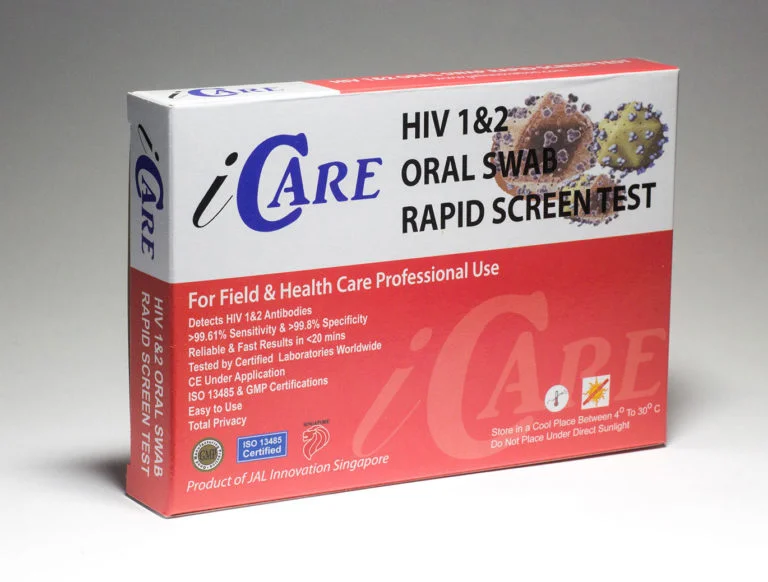Table of Contents
In Thailand, the need for widespread, accessible HIV testing is paramount to controlling the spread of the virus. Although traditional methods, like blood tests, are effective, they can be inaccessible for certain populations due to stigma, logistical issues or limited availability of testing centers. To address these challenges, HIV 1&2 Oral Swab Test Kits have emerged as a promising alternative. These tests are easier to use, less invasive and more accessible, making them ideal for reaching key populations at higher risk of HIV infection.
Oral HIV tests, are particularly beneficial for populations that may be hesitant to seek testing at traditional healthcare facilities. Deploying these HIV oral tests in urban and rural areas can enhance early detection, improve access to care and contribute significantly to Thailand’s public health strategy in the fight against HIV/AIDS.
This article focuses on the strategies for deploying HIV 1&2 Oral Swab Test Kits among Thailand’s key populations. These groups include individuals at higher risk of HIV, such as men who have sex with men (MSM), sex workers, people who inject drugs (PWID) and migrant workers. We will explore how targeted testing strategies can be effectively implemented in Bangkok, Chiang Mai, Pattaya, Phuket, Khon Kaen and Songkhla – all critical areas where HIV prevalence is a concern.
What is an HIV Oral Swab Test and How Does It Work?

HIV Oral Swab Tests are a type of diagnostic tool that allows for the detection of HIV antibodies or antigens using an oral fluid sample, usually collected from the inner cheek. The test is non-invasive and quick, providing results in as little as 20 minutes. It works by detecting the presence of HIV 1 & 2 antibodies in the oral fluid, which are produced by the body after an HIV infection.
One of the major advantages of HIV Oral Swab Tests is that they do not require specialized training for administration, making them suitable for use in non-clinical settings. This simplicity and ease of use have made them a popular choice for outreach programs, community testing and mobile health units aimed at key populations.
How Does the Oral HIV Test Work?
- Step 1: The HIV Oral Swab Test Kit is used to collect a sample of oral fluid, typically through swabbing the inner cheek.
- Step 2: The sample is then placed on a testing device or cassette that reacts with the HIV antibodies or antigens present.
- Step 3: Results are typically available in 20 minutes, with clear indications of whether the test is positive or negative.
Oral fluid HIV tests offer a quicker, more comfortable and private alternative to traditional blood-based HIV testing methods, which is particularly valuable for populations with limited access to clinics or those who experience barriers to traditional testing.
Targeting Key Populations in Thailand
Key populations in Thailand are groups at increased risk for HIV, including MSM, sex workers, PWID and migrant workers. These groups often face significant barriers to accessing healthcare services, including fear of stigma, lack of trust in healthcare systems and financial or logistical obstacles. Therefore, tailored strategies using HIV Oral Swab Test Kits are essential to overcoming these barriers.
People Who Inject Drugs
PWID are at high risk for HIV due to needle sharing and other unsafe practices. Providing access to affordable HIV oral tests at harm reduction programs or needle exchange programs can be a vital strategy in controlling the spread of HIV in this population.
Cities like Chiang Mai and Khon Kaen have active harm reduction programs that can integrate HIV Oral Swab Tests into their services, enabling PWID to test conveniently and regularly.

Migrant Workers
Thailand hosts a large population of migrant workers, especially from neighboring countries like Myanmar, Laos and Cambodia. Many migrant workers lack access to healthcare services, making them vulnerable to undiagnosed HIV infections. Offering Oral HIV Tests through outreach programs targeting migrant communities in places like Songkhla and Atyrau can provide vital HIV prevention and testing services.
Migrant workers often face difficulties accessing formal healthcare, so providing free or low-cost HIV test kits at community centers or through mobile clinics in areas with large migrant populations is a key strategy for improving testing rates.
Effective Strategies for Deploying Oral Swab HIV Test Kits in Thailand
To successfully deploy HIV Oral Swab Test Kits among Thailand’s key populations, specific strategies are required. These strategies must be tailored to the unique needs of each group, considering the local context and the specific barriers each population faces.
Outreach Programs and Mobile Clinics
One of the most effective ways to reach remote populations and key at-risk groups is through outreach programs and mobile clinics. These programs can distribute HIV test kits in areas that are otherwise difficult to access. Mobile health units can be deployed in cities like Phuket, Pattaya and Chiang Mai, providing testing, counseling and follow-up services at a local level.
Community Engagement and Education
Engaging communities is essential for reducing the stigma surrounding HIV testing. Community health workers and NGOs can use HIV Oral Swab Rapid Test Kits to educate and empower communities to test regularly. Workshops, awareness campaigns and public events can help demystify the HIV test kit process and encourage more people to take advantage of the available testing services.
Collaboration with Key Health Organizations
Partnering with local health organizations, international NGOs and government health services is essential to expanding access to HIV 1&2 Oral Swab Tests. These collaborations can ensure that HIV testing is integrated into existing health programs aimed at key populations, such as MSM, sex workers and PWID.
Providing Test Kits at Key Locations
In places with high concentrations of key populations, such as Pattaya, Chiang Mai and Almaty, providing HIV self-test kits at pharmacies, health centers and community spaces can help increase testing rates. Testing in locations where people feel comfortable can encourage individuals who might otherwise avoid testing to come forward.

Conclusion
Deploying HIV 1&2 Oral Swab Test Kits in Thailand is a powerful strategy to improve access to HIV testing for key populations. By overcoming barriers such as stigma, geographic distance and logistical challenges, these tests can help ensure that more individuals get tested, diagnosed early and receive appropriate care.
Thailand’s cities like Bangkok, Chiang Mai, Pattaya, Phuket, Songkhla and Khon Kaen offer unique opportunities for reaching high-risk groups with effective, targeted HIV testing strategies. By leveraging HIV Oral Swab Test Kits, the country can increase early detection, reduce HIV transmission and ultimately improve public health outcomes.
As the country moves forward with decentralized HIV testing, continued efforts to educate healthcare workers, distribute testing kits and engage with at-risk populations will be critical in making HIV testing more accessible to everyone.
FAQs on HIV Rapid Test Kit
What is an HIV Oral Swab Test?
An HIV Oral Swab Test is a diagnostic tool that uses oral fluid to detect the presence of HIV 1 & 2 antibodies. It is a non-invasive, fast and private way to test for HIV, providing results in as little as 20 minutes.
How does the HIV Oral Swab Test work?
The HIV Oral Swab Test involves swabbing the inner cheek to collect oral fluid, which is then placed on a test device that detects HIV antibodies. The results are typically available in 20 minutes.
Where can I get an HIV Oral Test in Thailand?
HIV Oral Swab Test Kits are available at pharmacies, healthcare centers and through outreach programs in key cities like Bangkok, Pattaya and Phuket. They can also be accessed through mobile clinics and NGOs targeting high-risk populations.
Is the HIV Oral Swab Test accurate?
Yes, the HIV Oral Swab Test is accurate when used correctly. However, a confirmatory test from a healthcare provider is recommended if the results are positive.






